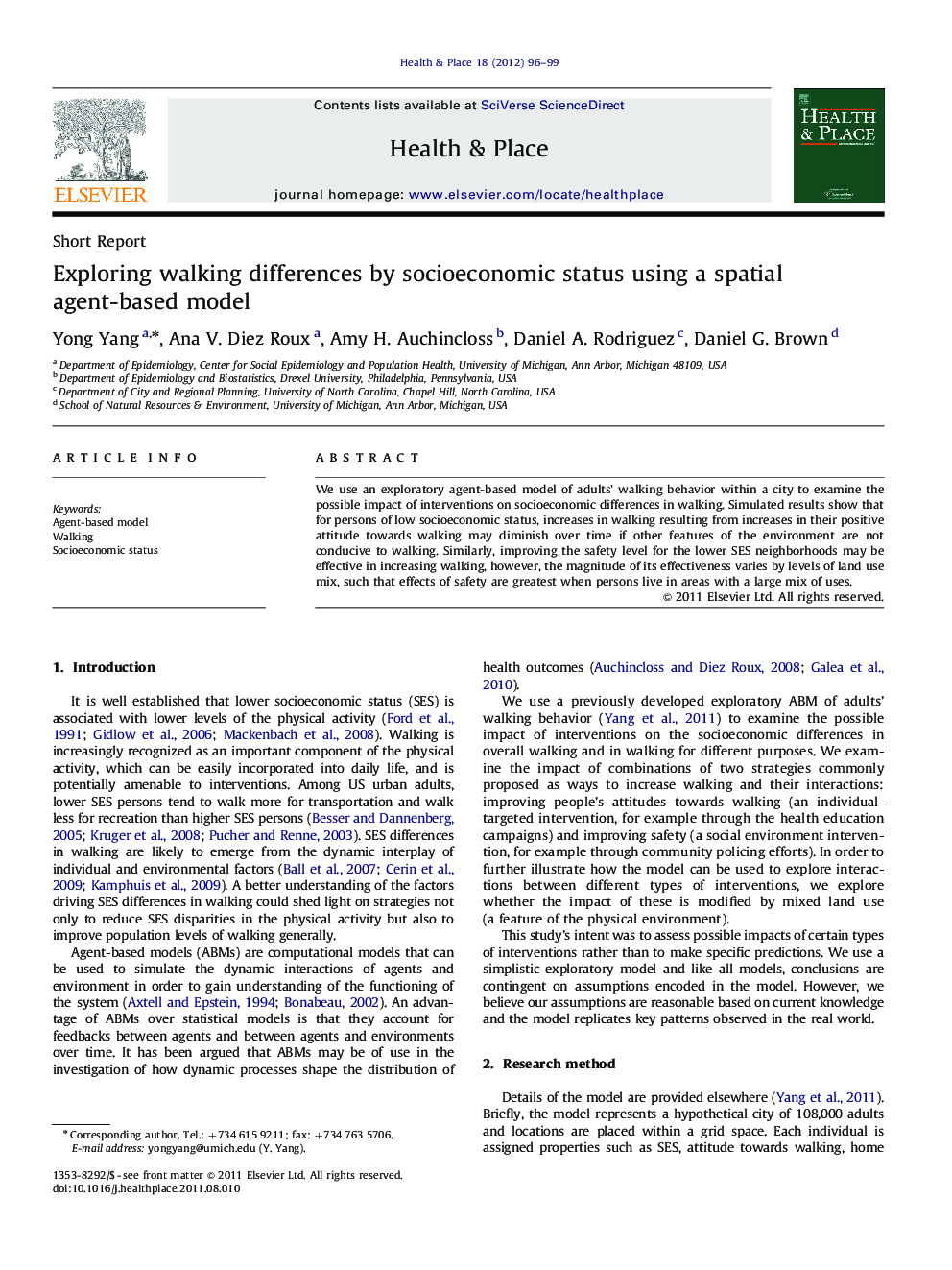| Article ID | Journal | Published Year | Pages | File Type |
|---|---|---|---|---|
| 10502609 | Health & Place | 2012 | 4 Pages |
Abstract
We use an exploratory agent-based model of adults' walking behavior within a city to examine the possible impact of interventions on socioeconomic differences in walking. Simulated results show that for persons of low socioeconomic status, increases in walking resulting from increases in their positive attitude towards walking may diminish over time if other features of the environment are not conducive to walking. Similarly, improving the safety level for the lower SES neighborhoods may be effective in increasing walking, however, the magnitude of its effectiveness varies by levels of land use mix, such that effects of safety are greatest when persons live in areas with a large mix of uses.
Related Topics
Health Sciences
Medicine and Dentistry
Public Health and Health Policy
Authors
Yong Yang, Ana V. Diez Roux, Amy H. Auchincloss, Daniel A. Rodriguez, Daniel G. Brown,
